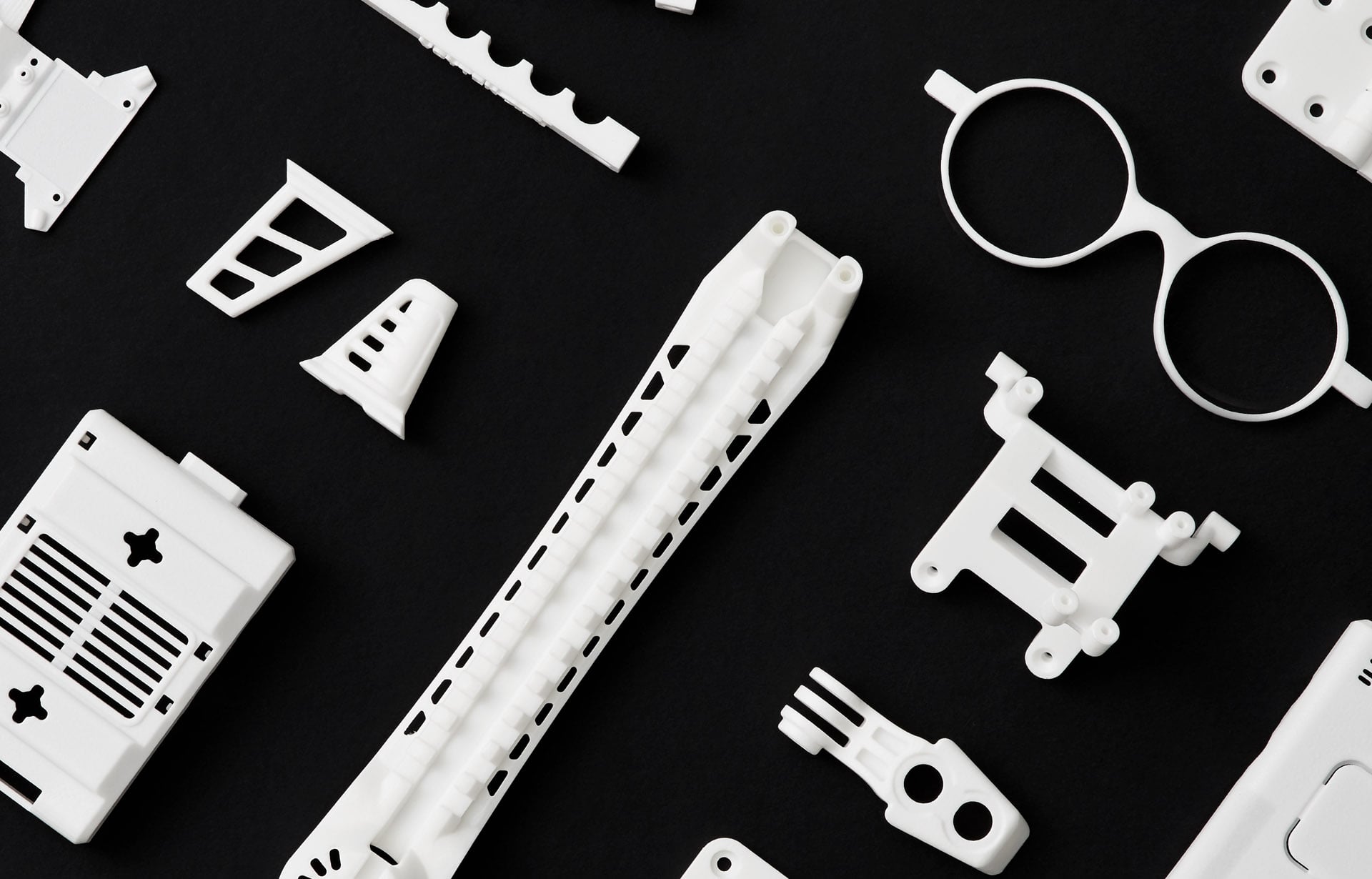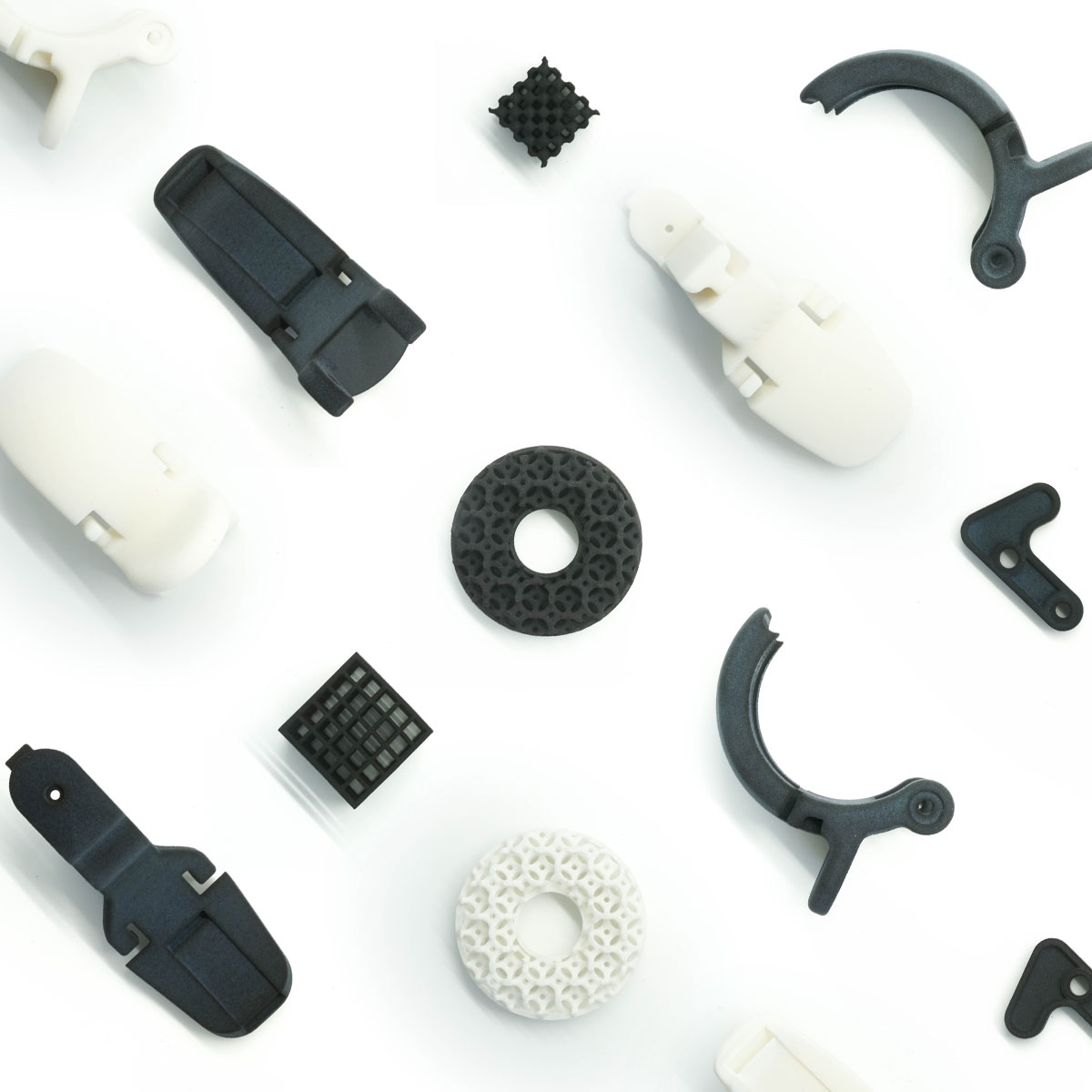-
-
- Manufacturing
- Industries
- Materials
-
ABOUT
Resources
- Get a Quote
-
My Shapeways
-
0






PA12 is a durable Nylon 12 plastic that can be used for a wide range of applications, both for prototyping and for end products. Printed using Selective Laser Sintering (SLS), when thin, it’s flexible enough for hinges and springs and when thick, it’s strong enough for structural components. Try the Premium or Smooth finishes for a higher quality look and feel. More information about this material can be found in our Help Center.
Looking to order a sample of this material for your project or application? Order now.
 White
White
 Black
Black
 Pink
Pink
 Red
Red
 Orange
Orange
 Blue
Blue
 Green
Green
 Yellow
Yellow
 Purple
Purple
Maximum Bounding Box
650 × 350 × 550 mm (Natural White)
345 × 375 × 440 mm (Smooth White)
180 × 230 × 320 mm (Natural & Smooth Black)
200 × 150 × 150 mm (Processed White & Processed Dyed Colors)
[Parts over 330 mm long in any direction may have a visible line due to our dual laser printer]
Minimum Bounding Box
X + Y + Z ≥ 7.5 mm (Natural)
X + Y + Z ≥ 25.0 mm and axes must be ≥ 2.5 mm (Processed)
10 x 10 x 10 mm (Smooth)
The bounding box is a 3D imaginary outline of a box that encloses the smallest area occupied by your model. Your model must be within the minimum and maximum bounding box sizes. If the size of the model is close to the maximum bounding box, then the printing orientation will be restricted.
A supported wall is connected at least on two sides of the wall, while an unsupported wall is connected only on one side of the wall. Walls that do not meet the minimum requirements may not survive printing and cleaning processes. Additionally, models may still be rejected based on the wall geometry of the model. Please consider the size of your model and reinforce the walls or add support structures as needed as minimum guidelines will not always be adequate for large models.
0.8 mm (Natural)
0.9 mm (Processed)
1.5 mm (Smooth)
1.0 mm (Natural & Processed)
1.5 mm (Smooth)
A wire is a circular, rectangular or even triangular feature that is thinner in its unconnected directions than its length. A supported wire is connected at least on two sides of the model, while an unsupported wire is connected on one side of the model. Wires that do not meet the minimum requirements may not survive printing and cleaning processes. Additionally, models may still be rejected based on the wire geometry of the model. Please consider the size of your model and reinforce the wires or add support structures as needed as minimum guidelines will not always be adequate for large models.
0.2 mm high & wide for details (Natural & Processed)
0.3 mm high & 0.5 mm wide for details (Smooth)
0.5 mm high & wide for text (All)
0.2 mm high & wide for details (Natural & Processed)
0.3 mm high & 0.4 mm wide for details (Smooth)
0.5 mm high & wide for text (All)
For text, the ratio between width and depth, should be 1:1 and sans-serif fonts are preferred for line weight consistency.
4.0 mm (Natural & Processed)
10.0 mm (Smooth)
2.0 mm (Natural & Processed)
8.0 mm (Smooth)
Escape holes are necessary to empty the support material of a hollow model. Two escape holes at the opposite ends of the model is optimal for the support removal process. Please consider the size of your model and make the escape holes bigger or add more escape holes as needed as minimum guidelines will not always be adequate for large models.
0.5 mm (Natural & Processed)
10.0 mm (Smooth)
Clearance is the space between two individual parts in a model. If the space among the individual parts do not meet the minimum clearance, then parts can fuse together or can be difficult to clean. This is important for movable pieces like hinges, gears, etc.
Interlocking
Yes (Natural & Processed)
No (Smooth)
Enclosed
Yes (Natural & Processed)
No (Smooth)
Up to 10 (Smooth)
Up to 250 (Natural & Processed)
± 0.15 mm, then ± 0.15% of longest axis


"*" indicates required fields
From product development to industrial 3D manufacturing, we can help you scale your business.
contact sales